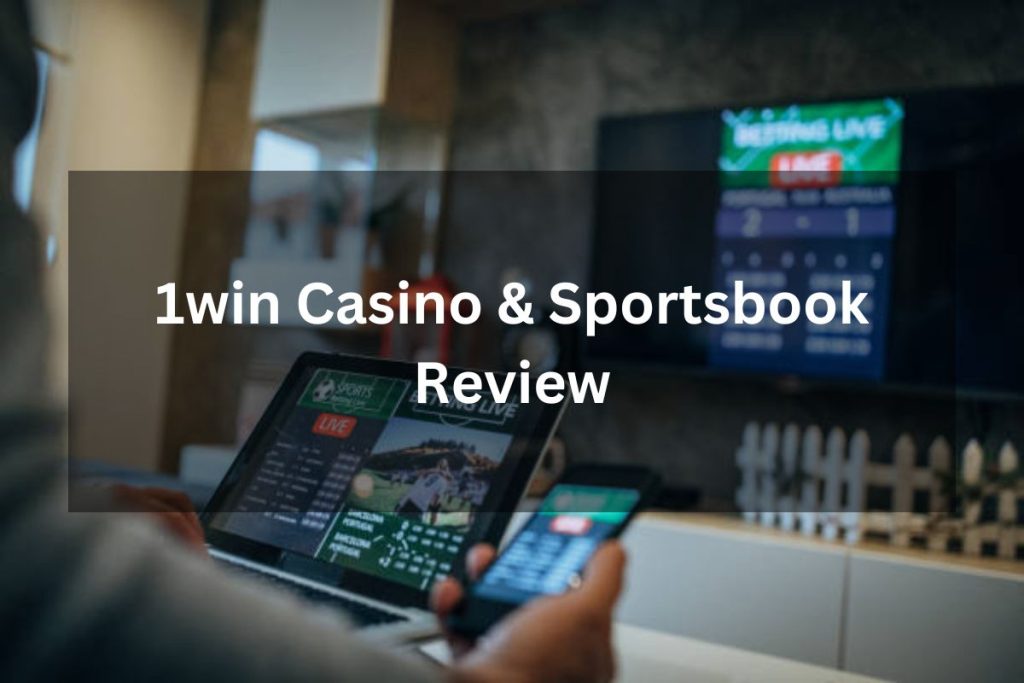In the ever-evolving landscape of online gaming, the emergence of innovative platforms has transformed the way enthusiasts engage with their favorite pastimes. These platforms not only offer a diverse range of games but also incorporate advanced technology to enhance user experience, making gaming more accessible than ever before.
Among the frontrunners in this digital revolution is 1win, a platform that stands out for its user-friendly interface and extensive game selection. Gamers can explore a variety of options, from classic favorites to cutting-edge titles, all designed to cater to different tastes and preferences.
As the online gaming industry continues to expand, it is crucial for players to stay informed about the latest trends and developments. With platforms like 1win leading the charge, the future of gaming promises to be not only exciting but also increasingly interactive, inviting players to immerse themselves in new worlds and experiences.
Understanding the Importance of Effective Communication
Effective communication is a cornerstone of successful interactions in both personal and professional realms. It fosters understanding, builds relationships, and enhances collaboration. When individuals express their thoughts clearly, they minimize misunderstandings and create an environment conducive to teamwork and problem-solving.
In today’s fast-paced world, the ability to convey messages succinctly and accurately is more crucial than ever. Miscommunication can lead to conflicts, decreased productivity, and missed opportunities. By honing communication skills, individuals can ensure their ideas are heard and valued, paving the way for a more harmonious and effective exchange of information.
To further illustrate the significance of effective communication, consider the following key components:
- Clarity: Ensure messages are clear and straightforward.
- Active Listening: Engage fully in conversations and respond appropriately.
- Empathy: Understand and acknowledge others’ perspectives and feelings.
- Feedback: Provide constructive feedback to promote growth and understanding.
- Non-Verbal Cues: Be aware of body language and tone, which can impact the message.
Exploring Different Forms of Written Expression
Written expression is a powerful tool that transcends mere communication; it encapsulates the essence of human experience. From poetry to prose, each form offers unique avenues for creativity and reflection. Authors often experiment with different styles, pushing the boundaries of language to evoke emotions and provoke thought.
In today’s digital age, the landscape of written expression continues to evolve. Blogs, social media posts, and e-books have emerged as popular platforms, allowing diverse voices to reach a global audience. As writers explore these new mediums, they redefine traditional narratives and make literature accessible to all, fostering a culture of inclusivity.
To better understand the various forms of written expression, consider the following table that highlights key characteristics and examples:
| Form | Characteristics | Examples |
| Poetry | Concise, rhythmic, often metaphorical | Haikus, sonnets, free verse |
| Prose | Structured, narrative-driven, detailed | Novels, short stories, essays |
| Blogs | Conversational, accessible, topical | Personal blogs, informational posts |
| Social Media | Brief, engaging, often visual | Tweets, Instagram captions, Facebook updates |
| E-books | Digital, interactive, varied formats | Self-published works, instructional guides |
The Role of Active Listening in Conversations
Active listening is a crucial component of effective communication, enabling individuals to fully engage in conversations. It involves not just hearing the words spoken but understanding the emotions and intentions behind them. By focusing on the speaker, listeners can foster a sense of trust and respect, paving the way for more meaningful interactions. This practice can significantly enhance personal relationships and professional collaborations alike, as it encourages openness and reduces misunderstandings.
Moreover, active listening can help individuals develop empathy, allowing them to connect with others on a deeper level. When people feel heard, they are more likely to share their thoughts and feelings, creating an environment conducive to problem-solving and conflict resolution. Ultimately, mastering the art of active listening can transform conversations, turning them into opportunities for growth, learning, and connection.
To further illustrate the importance of active listening, consider the following key benefits:
- Enhances understanding and clarity
- Builds rapport and trust
- Encourages open communication
- Reduces conflicts and misunderstandings
- Promotes empathy and emotional intelligence
Developing Vocabulary for Enhanced Language Skills
Developing a rich vocabulary is essential for enhancing language skills, as it empowers individuals to express themselves more clearly and effectively. A diverse vocabulary not only aids in comprehension but also enriches communication, allowing for more nuanced discussions and better engagement with varied audiences.
To cultivate a robust vocabulary, individuals can employ various strategies such as reading widely, practicing word usage in context, and utilizing vocabulary-building apps. These methods not only improve word recall but also help in understanding the subtleties of language, ultimately leading to greater confidence in both spoken and written communication.
Below are some effective strategies for vocabulary development:
| Strategy | Description |
| Reading | Engage with diverse genres to encounter new words in context. |
| Flashcards | Create flashcards with new words and their meanings for regular review. |
| Word Games | Play games like Scrabble or crossword puzzles to make learning fun. |
| Writing Practice | Incorporate new vocabulary into writing exercises to solidify understanding. |
Strategies for Overcoming Language Barriers in Dialogue
Language barriers can significantly hinder effective communication, but various strategies can facilitate dialogue across linguistic divides. One effective approach is to employ simple language and avoid jargon, ensuring that the message is accessible to everyone involved. Additionally, utilizing visual aids can enhance understanding, providing context that transcends words.
Another important strategy is to foster an environment of patience and openness. Encouraging participants to ask questions and seek clarification promotes a collaborative atmosphere. Moreover, leveraging technology, such as translation apps or tools, can bridge gaps in understanding. By integrating these methods, conversations can become more inclusive and productive.
To further illustrate these strategies, consider the following techniques:
- Use clear and concise language.
- Incorporate visuals and gestures.
- Encourage questions and feedback.
- Utilize translation tools when necessary.
- Create a supportive environment for dialogue.
